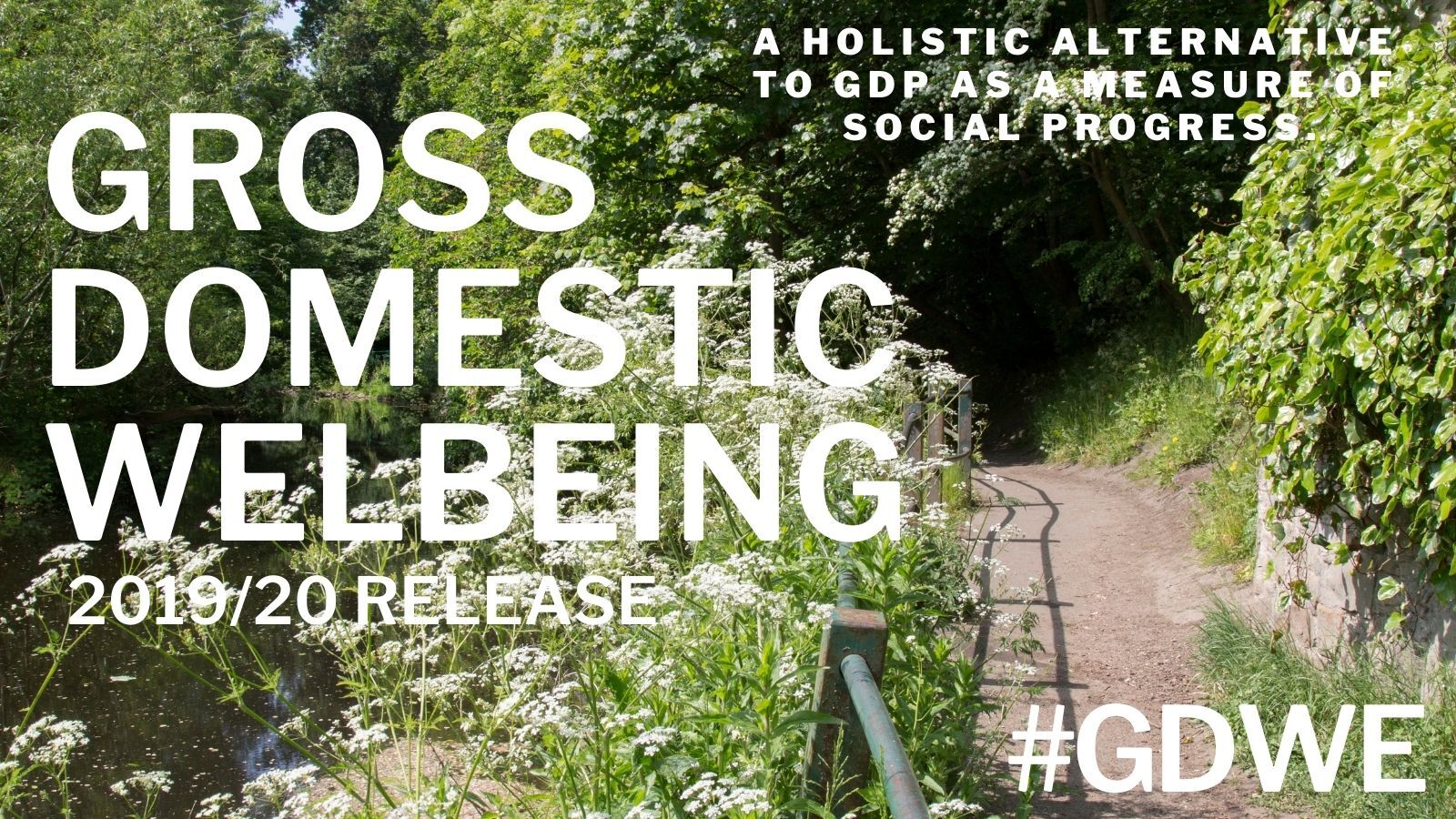Gross Domestic Wellbeing: loosening GDP’s hold

- by Ed Humpherson, Director General, Office for Statistics Regulation
- 3 August 2021
- 5 minute read
GDP – Gross Domestic Product – appeared for a long time to have a stranglehold over debates on economic progress and society’s welfare. It’s been the single number that people most often turn to and quote at each other; it’s used to claim political success or berate political failure; and it’s used as the basis of comparisons between countries.
Beyond GDP
Over the last decade or so, there has been a concerted attempt to break this stranglehold. I won’t go into all the reports that have been the waymarkers on this debate. If you’re interested, I suggest starting by Googling “Stigliz/Sen/Fitoussi”.
As a result of these efforts, thinking about the role of GDP has come a long way. There’s been a focus on reforming GDP from within – making it a better and more relevant measure of economic activity. This includes work to consider the production boundary – what counts as “productive activity” – to include work done in the home. It also includes work to have better measures of transactions that take place online as part of the digital economy.
The single number
There have also been efforts to create new, broader measures. These fall into two camps: firstly, there are approaches which aim to create parallel measures to GDP – additional things to look at to provide context and challenge to GDP. The ONS’s pioneering work on personal wellbeing is a great example of this. It doesn’t seek to overturn GDP so much as supplement it.
The second camp attempts to create a new, comprehensive, single number. This approach recognises that the power of GDP lies in how it reduces the vast complexity of economic activity to one overarching number. This single number can be broken down into a series of supporting numbers (e.g. output for a region, or output for a sector of the economy). But the single number gives an easy point of reference and a starting place for debate. So, analysts have asked: Can we do the same thing, and create a single focal point for the broader concept of wellbeing?
GDWe: What I like, and what can be developed further
Yesterdays report by Carnegie UK on Gross Domestic Wellbeing – GDWe – is a fine example of this latter, single number approach. It seeks to create a single index to measure wellbeing, integrating a wide range of domains beyond the purely economic. And it tracks the development of this index over time – allowing insight into whether national wellbeing has risen or fallen.
I like a lot about the Carnegie UK approach. It shares strengths with GDP itself: it’s a coherent, single number (and neatly, it’s published on the same week as ONS publish GDP). It’s clear how it’s derived from data sources. And, like GDP, it’s also easy to dive down into its components – to see how, for example, changes in scores of personal wellbeing impact on the overall picture.
I also like the nowcasting: Carnegie UK’s analysts have identified how they think the index will have been affected by the pandemic. This in turn reflects another strength: Carnegie UK are very clear about data gaps, particularly around timeliness. That is, some of the measures they are using were last estimated by ONS before the pandemic. The Trust are clear about this gap in timely data and its probable impact on the index.
And I like the emphasis on “governance” as a domain. This recognises that there is more to the wellbeing of society than simply an individual’s personal wellbeing, health and lifestyle. Wellbeing also depends on how people feel about the society they live in, and their ability to exercise their voice in that society – reflected in particular in trust in democratic institutions. This breadth of perspective is very welcome; without it, measures of wellbeing run the risk of being quite atomised, focusing on individuals rather than communities or society as a whole.
There are also things I would like to see develop. First, it would be good, as Carnegie UK updates the index through further iterations, for there to be more insight on what is driving changes in the index. More on the links between different elements (do some of them tend to move together?) would also be helpful. I would also like to see even more on the potential limitations of the data that are collected to inform the index.
Adopting Trustworthiness, Quality and Value
But above all, it would be great if this measure could grow in profile and benefit from enhanced public confidence.
And to do that, I’d recommend that Carnegie UK focus on demonstrating trustworthiness, quality and value. These three concepts – TQV for short – form the pillars of the Code of Practice for Statistics, which ONS must comply with in full when they publish their GDP statistics. The pillars are about how an organisation publishing statistics can command public confidence: by demonstrating their organisational Trustworthiness (what are the processes that surround the creation and publication of the statistics); Quality (what are the data, where are they from, and what are the limitations); and Value (what questions do these statistics seek to answer).
Adopting TQV as a framework can help demonstrate the rigour that has been applied to developing the index – and play a part in securing the public confidence the index deserves. And that, in turn, will ensure that measures like this play their part in loosening GDP’s hold.
Help us make the case for wellbeing policy
Keep in touch with Carnegie UK’s research and activities. Learn more about ways to get involved with our work.
"*" indicates required fields
